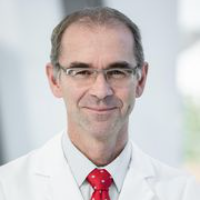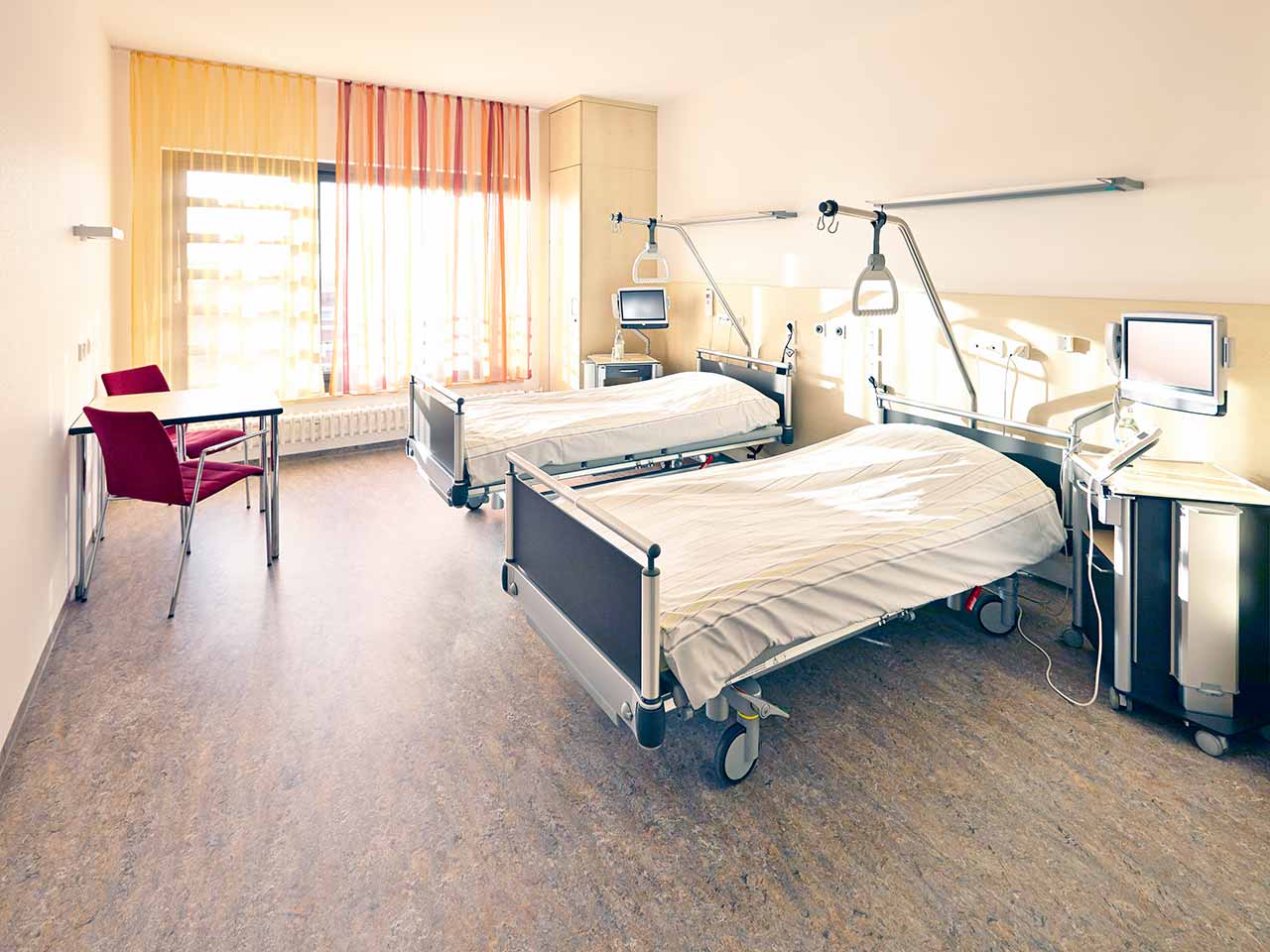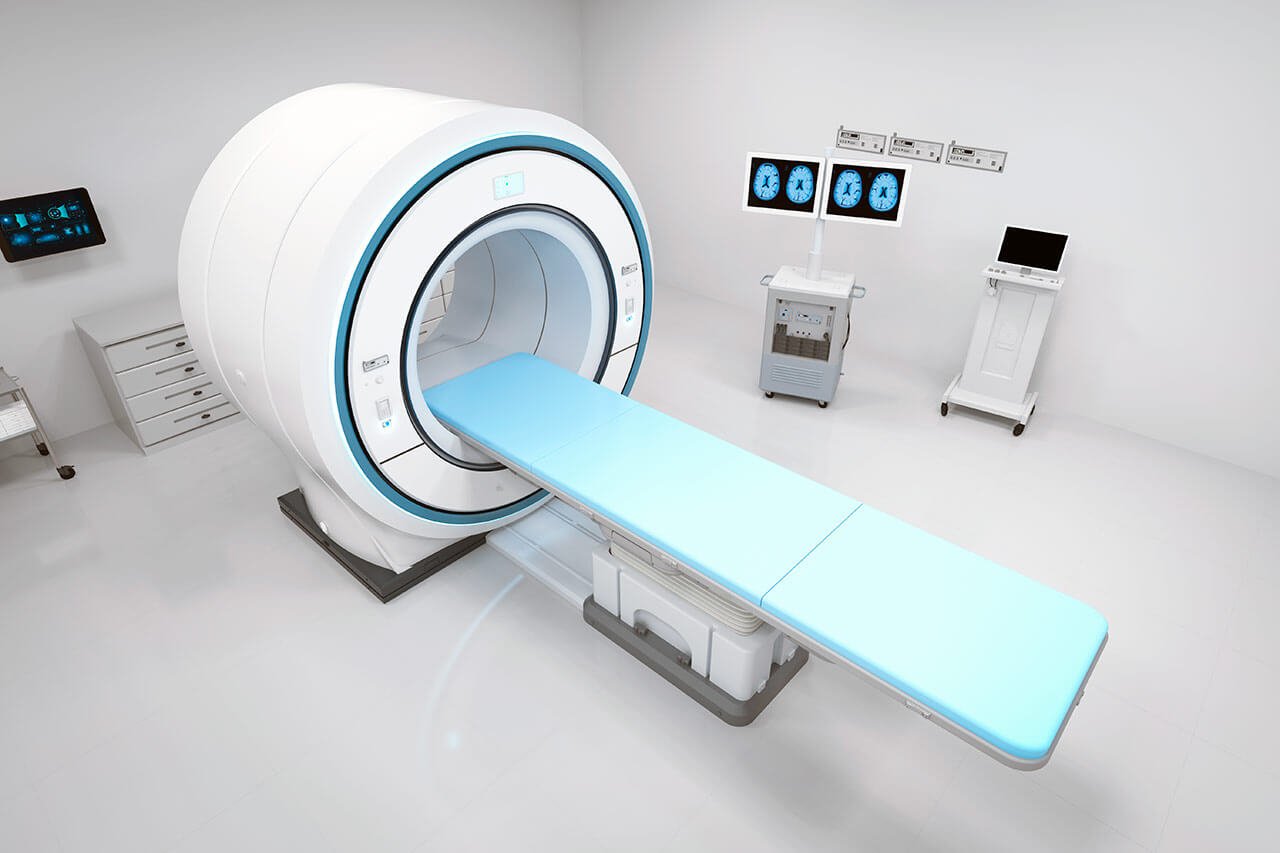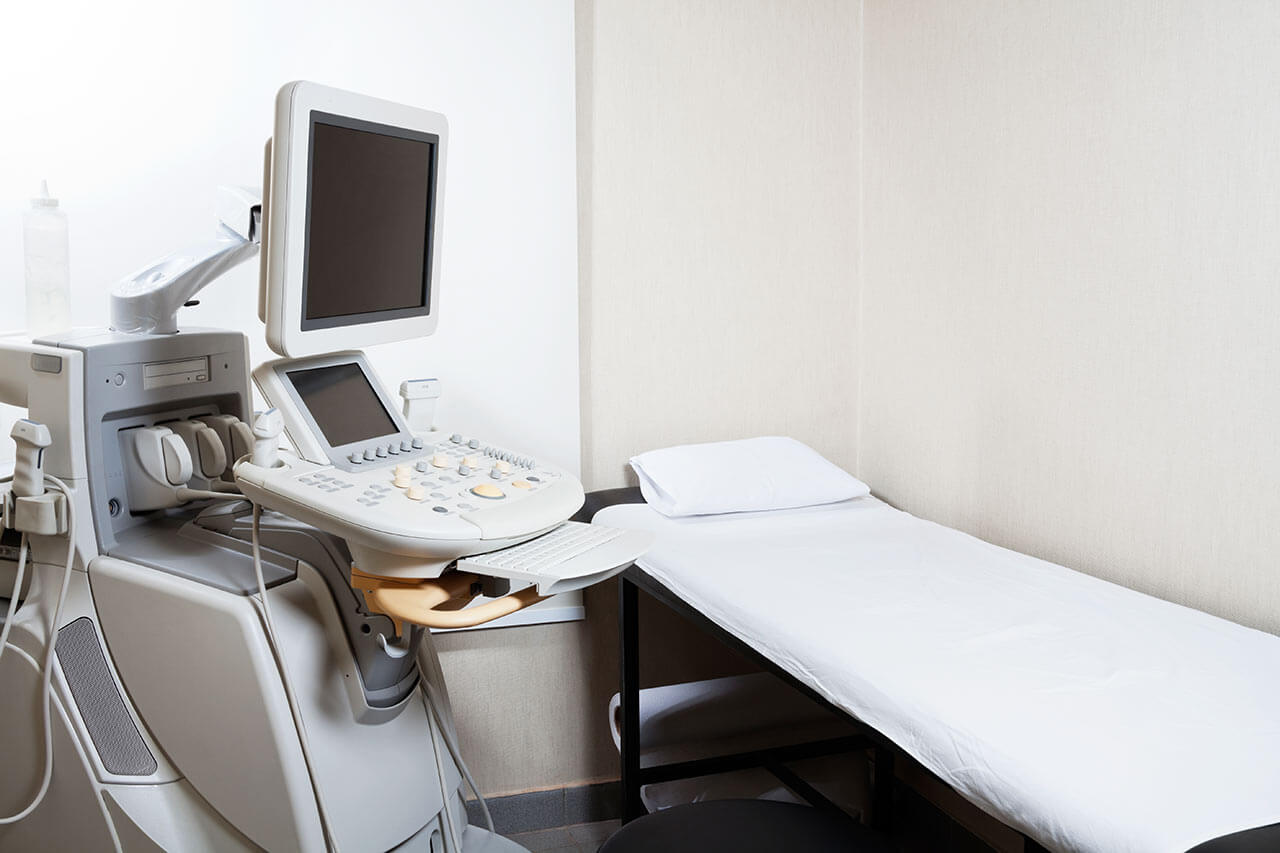
The program includes:
- Initial presentation in the clinic
- clinical history taking
- review of medical records
- physical examination
- laboratory tests:
- complete blood count
- general urine analysis
- biochemical analysis of blood
- inflammation indicators (CRP, ESR)
- indicators of blood coagulation
- gynecological examination
- ultrasound scan: pelvis, abdomen
- CT scan/MRI of the abdomen and pelvis
- preoperative care
- da Vinci treatment in endometriosis
- symptomatic treatment
- control examinations
- the cost of essential medicines and materials
- nursing services
- full hospital accommodation
- explanation of future recommendations
How program is carried out
During the first visit, the physician will conduct a clinical examination and go through the results of the available diagnostic tests. After that, you will undergo the necessary additional examination, such as the assessment of liver and kidney function, ultrasound scan of the abdominal and pelvic organs, CT scan and MRI (if necessary). Based on the results of an additional examination, the physician will clarify the degree of the internal organs affection by endometriosis, choose the surgical technique and the type of anesthesia.
Surgery with the da Vinci robot starts with general anesthesia. After anesthesia, the surgeon makes small incisions through which the manipulators of the da Vinci robot and a video camera are inserted into the body. With the help of manipulators, the surgeon removes foci of endometriosis on the internal organs, and the video camera continuously transmits a three-dimensional image of the operating field in 12-fold magnification to the monitor.
Due to the precise movements of the da Vinci robotic arms, the surgeon can successfully remove endometriotic foci of any location, including internal genital and extragenital endometriotic foci. Excessive body mass, which usually complicates endoscopic surgery, is also not a direct contraindication to robotic intervention.
After the completion of the operation, you will be transferred back to the ward, under the supervision of the attending physician and nursing staff. Due to the minimal invasiveness of the operation and the short duration of general anesthesia, you will not need to stay in the intensive care unit for a long time.
Finally, the attending physician will evaluate the results of control examinations, schedule the date of discharge from the hospital and give you detailed recommendations for further follow-up and treatment.
Required documents
- Medical records
- Ultrasound scan (if available)
Service
You may also book:
 BookingHealth Price from:
BookingHealth Price from:
About the department
The Department of Adult and Pediatric Gynecology, Mammology, Obstetrics at the University Hospital Ulm offers high-precision diagnostics and effective treatment of the full range of diseases of the female reproductive system and breast pathologies. The medical facility also employs a competent team of obstetricians, whose responsibilities include comprehensive management of pregnancy, childbirth, and postnatal care for mother and baby. More than 3,000 babies are born in the department's delivery rooms annually. The department cooperates closely with the UniFee Reproductive Medicine Center, which allows gynecologists to treat female infertility together with reproductive medicine specialists. The department's gynecologists focus on women with reproductive system cancers. The medical facility is certified by the German Cancer Society (DKG) as a specialized center. The specialists also successfully treat endometriosis, one of the most common benign gynecologic diseases. In the field of mammology, priority is given to the provision of medical care to women with breast cancer. Doctors perform comprehensive diagnostics, surgical and conservative treatment, and reconstructive plastic surgery after mastectomy. The department's specialists use state-of-the-art technical resources and their professional skills to provide each patient with high-quality medical service.
The department is headed by Prof. Dr. med. Wolfgang Janni, one of the most reputable obstetrician-gynecologists in Germany, which is confirmed by the Focus magazine rating and the high credibility among patients, including those from foreign countries. The doctor underwent training in renowned medical facilities in the United States and held positions at the leading German university hospitals, including the University Hospital of Ludwig Maximilian University of Munich and the University Hospital Duesseldorf. With over 25 years of experience, Prof. Janni specializes in treating women with gynecological pathologies and providing obstetric services. During this time, he has dealt with the most complex clinical cases. He is the winner of four Awards of Merit in Medicine from the American Society of Clinical Oncology and an Award from the German Society of Obstetrics and Gynecology. His scientific publications exceed 430 works in the medical literature.
The department's gynecologists have gained a solid reputation in the treatment of cancer of the female reproductive system. The specialists have vast experience in treating uterine, cervical, ovarian, vulvar, and vaginal cancer. The department has a powerful technical base for comprehensive diagnostics in cases of suspected cancer, including ultrasound, MRI, and PET-CT. A biopsy for subsequent histological examination is performed under local anesthesia for the maximum comfort of patients. A treatment regimen is developed individually during interdisciplinary tumor boards. The best treatment results are achieved through a combination of surgical resection of the malignant tumor (advanced stages of cancer require major surgery involving the removal of the affected organs and adjacent anatomical structures), drug therapy (chemotherapy, hormone therapy, and targeted therapy), and radiation therapy. The department's specialists prefer to perform operations using minimally invasive techniques. Surgeons also successfully use the da Vinci high-precision surgical system. Such operations are performed only in the world's leading medical complexes.
An integral part of the department's clinical practice is the treatment of endometriosis, a benign disease that can potentially lead to infertility, painful periods, pelvic pain, and even cancer. In patients with this disease, endometrial tissues (the inner mucous membrane lining the uterus) overgrow outside the uterus. Endometriosis is a widespread disease. Therefore, the department houses a specialized center for the treatment of this condition. Women with this diagnosis can receive comprehensive medical care here. Patients undergo a thorough diagnosis, including a gynecological examination, ultrasound, MRI, and laparoscopy, as well as an individually developed treatment regimen. The optimal type of therapy depends on the stage of endometriosis and the severity of the symptoms. In the early stages of the disease, the department's specialists use only hormone therapy, and in the advanced stages, the most effective method is surgery. Almost all surgical procedures for endometriosis are performed in the department using minimally invasive techniques. Gynecologists at the medical facility also have vast experience in robot-assisted surgery for endometriosis using the da Vinci surgical system, known for its high precision, minimal trauma rate, and barely noticeable scars.
The department also houses an advanced Breast Center that provides the full range of services for women and men with benign and malignant breast diseases. Of particular interest is the treatment of breast cancer, which is one of the most common types of oncology among women worldwide. The therapeutic process begins with an individual consultation with a breast specialist, followed by a complex of diagnostic tests, such as mammography, ultrasound scans, MRIs, and biopsy (if a suspicious neoplasm is detected during imaging tests). If the cancer diagnosis is confirmed, the center's breast specialists begin to elaborate a treatment regimen that is based on the surgical resection of the malignant tumor. In more than 75% of cases, the specialists manage to perform breast-conserving surgery. If it is impossible to preserve the patient's breast, options for reconstructive surgery with autologous tissues or silicone implants are considered. In most cases, the treatment regimen also includes conservative methods such as chemotherapy, antihormone therapy, antibody therapy, immunotherapy, and radiation therapy. It is worth noting that the department's specialists, in cooperation with radiation therapists, successfully perform intraoperative radiation therapy (irradiation directly during a surgical intervention).
The department's range of therapeutic options is complemented by the provision of high-quality obstetric services (Level I Perinatal Center). More than 3,000 babies are born in the department's delivery rooms every year. The department's obstetricians have vast experience in the management of multiple pregnancies and high-risk pregnancies. The specialists give preference to natural childbirth, but they can also perform a C-section whenever required. Childbirth takes place in four well-equipped delivery rooms with a pleasant atmosphere, and there is also a special room for water births. A competent team of obstetricians, gynecologists, and pediatricians works around the clock here, thus ensuring maximum safety for patients and babies. Obstetricians also focus on minimizing pain during childbirth, so they offer modern pain management options such as epidural anesthesia, homeopathy, and acupuncture. Special attention is paid to postpartum bonding in order to form a subtle and intuitive bond between mother and baby.
The department's range of medical services includes:
- Gynecology
- Diagnostics and treatment of benign gynecologic diseases
- Menstrual disorders
- Menopause and its symptomatic manifestations
- Chronic pelvic and lower abdominal pain
- Infections of the external and internal female genitalia
- Ovarian cysts and benign tumors
- Myomas
- Cervical dysplasia
- Endometriosis
- Urinary incontinence
- Pelvic organ prolapse
- Chronic bladder inflammation (cystitis)
- Various forms of infertility
- Hormonal imbalances due to gynecologic pathologies
- Diagnostics and treatment of malignant gynecologic diseases
- Uterine cancer
- Cervical cancer
- Ovarian cancer
- Endometrial cancer
- Vaginal cancer
- Vulvar cancer
- Diagnostics and treatment of gynecologic diseases in girls and young women
- Vaginal bleeding before the onset of the menstrual cycle
- Vaginal discharge
- Vulvovaginitis
- Synechiae
- Congenital malformations
- Puberty disorders
- Presence of a foreign body in the vagina
- Diagnostics and treatment of benign gynecologic diseases
- Mammology
- Diagnostics and treatment of benign breast diseases
- Mastopathy
- Breast cysts
- Breast fibroadenoma
- Intraductal papilloma of the breast
- Gynecomastia (breast enlargement in men)
- Diagnostics and treatment of malignant breast diseases
- Breast cancer
- Diagnostics and treatment of benign breast diseases
- Obstetrics
- Medical care before, during, and after childbirth
- Prenatal diagnostics and therapy (non-invasive and invasive methods)
- Pregnancy management, including high-risk and multiple pregnancies
- Childbirth: natural childbirth and C-section
- Other medical services
Curriculum vitae
Higher Education and Postgraduate Training
- 1989 - 1995 Medical studies, Ludwig Maximilian University of Munich.
- 1994 - 1995 One-year practice:
- Yale University Medical Center New Haven, USA.
- University of Michigan Medical Center in Ann Arbor, USA.
- Bellevue Hospital, New York University, New York, USA.
- University Hospital Hahnemann, Philadelphia, USA.
- 2003 Habilitation, Faculty of Medicine, Ludwig Maximilian University of Munich.
Professional Career
- 1995 - 2002 Intern, Research Fellow, and Assistant Physician, Department of Gynecology, University Hospital of Ludwig Maximilian University of Munich.
- 2002 - 2005 Senior Physician (specialization in Gynecologic Oncology), Department of Gynecology, University Hospital of Ludwig Maximilian University of Munich.
- 2005 - 2012 Senior Physician and Deputy Head Physician, Department of Gynecology, University Hospital of Ludwig Maximilian University of Munich.
- 2008 - 2012 Head Physician, Department of Gynecology, University Hospital Duesseldorf.
- 2008 - 2012 W3 Professorship in the Department of Medicine, Heinrich Heine University Duesseldorf.
- Since 2012 W3 Professorship at the Faculty of Medicine, University of Ulm.
- Since 2012 W3 Professorship and Head Physician, Department of Adult and Pediatric Gynecology, Mammology, Obstetrics, University Hospital Ulm.
- Since 2021 Deputy Director of the Comprehensive Cancer Center Ulm.
Positions in the Scientific Societies and Committees
- Since 2009 Board Member of the German Association for Interdisciplinary Medicine (Medica).
- Since 2009 Board Member of the German Cancer Society of North Rhine-Westphalia.
- 2009 - 2016 Deputy Chairman of the Mamma Commission, Working Group on Gynecologic Oncology.
- Since 2010 Technical Committee for the Promotion of Young Scientists, German Cancer Aid.
- Since 2011 Steering Group Member, Commission for the Development of S3 Recommendations for Breast Cancer, German Cancer Society.
- Since 2012 Steering Committee Member (Early Breast Cancer Collaborative Trialist Group), Oxford, UK.
- Since 2012 Board Member, Comprehensive Cancer Center Ulm.
- Since 2013 Cancer Advisory Board of the Ministry of Labor and Social Protection, Family, Elderly, Women of Baden-Wuerttemberg.
- Since 2014 International Network on Cancer, Infertility and Pregnancy (INCIP).
- Since 2014 Scientific Advisory Board of the Central Health Insurance Authority.
- Since 2014 Scientific Advisory Board of NOGGO e.V. Berlin.
- Since 2015 Advanced Training Committee of the District Medical Association South Wuerttemberg.
- Since 2015 Scientific Council of the Working Group on Health Insurance in Germany.
- Since 2015 Advisory Council of the GBG Forschungs GmbH Research Project.
- Since 2015 Elected as a Gyaecological Board Member.
- Since 2016 Chairman of the Mamma Commission of the Working Group on Gynecologic Oncology.
- Since 2016 Board Member of the Working Group on Gynecologic Oncology.
- Since 2017 Member of the National Academy of Sciences Leopoldina.
- Since 2021 Steering Committee Member of the EORTC Breast Cancer Group.
Awards and Prizes
- 2006 Honorary Award for Merits in Medicine from the American Society of Clinical Oncology (ASCO).
- 2004 Honorary Award for Merits in Medicine from the American Society of Clinical Oncology (ASCO).
- 2002 Honorary Award for Merits in Medicine from the American Society of Clinical Oncology (ASCO).
- 2001 Research Award, 24th Annual Breast Cancer Symposium in San Antonio, USA.
- 2000 Encouragement Prize from the German Society for Gynecology and Obstetrics.
- 2000 Honorary Award for Merits in Medicine from the American Society of Clinical Oncology (ASCO).
- 2000 Young Investigator Scholar Award from the Susan Komen Foundation..
Memberships in Professional Societies
- German Society for Gynecology and Obstetrics (DGGG).
- Working Group on Gynecologic Oncology (AGO) of the German Society for Gynecology and Obstetrics (DGGG).
- Bavarian Society for Obstetrics and Gynecology (BGGF).
- European Society for Medical Oncology (ESMO).
- American Association for Cancer Research (AACR).
- American Society of Clinical Oncology (ASCO).
- German Society for Senology (DGS).
- German Cancer Society (DKG).
- European Society of Mastology (EUSOMA).
- German Association for Interdisciplinary Medicine (MEDICA).
Photo of the doctor: (c) Universitätsklinikum Ulm
About hospital
The University Hospital Ulm is an advanced medical complex that provides patients with high-class medical care using the very latest scientific achievements. The medical facility has been performing successful clinical activities for more than 40 years and has long earned an excellent reputation throughout Europe. The hospital regularly demonstrates high treatment success rates, takes an active part in the training of medical students, and works tirelessly on promising research projects.
The university hospital consists of 29 specialized departments and 16 scientific institutes, where more than 7,000 highly qualified employees work for the benefit of their patients. More than 55,000 inpatients and about 300,000 outpatients are treated here every year. The hospital has 1,274 beds. The medical team of the hospital is focused on providing personalized medical services using the most modern and sparing diagnostic and treatment methods.
The University Hospital Ulm is the largest medical complex in the region, and practically all areas of modern medicine are represented here. Transplantology and oncology are among the priority areas of clinical activity in the medical facility. The hospital holds leading positions in the world in bone marrow transplantation. In addition, the hospital has advanced experience in cancer treatment. The Comprehensive Cancer Center is recognized as the leading facility of this kind in the country, and it is certified by the German Cancer Society (DKG). It provides effective treatment for various types of cancer. The center also offers innovative CAR T-cell therapy. In addition, the Cancer Center is actively engaged in research activities to improve available treatment methods and develop innovative therapeutic techniques to fight cancer.
Along with the use of advanced technologies, doctors show respect, understanding, and a humane attitude toward the patient. The medical team includes competent psychologists, who are always ready to provide assistance and support to the patients and their families during the therapeutic process.
Photo: (с) depositphotos
Accommodation in hospital
Patients rooms
The patients of the University Hospital Ulm live in comfortable single and double rooms with a modern design and light colors. All patient rooms have an ensuite bathroom with a toilet and a shower. The patient room furnishings include a comfortable automatically adjustable bed, a bedside table, a wardrobe, a table and chairs, a telephone, a radio, and a TV. Wi-Fi access is also available in patient rooms.
The hospital also offers enhanced-comfort rooms, which additionally have a safe, a refrigerator, and upholstered furniture. The bathroom in the enhanced-comfort room has changeable towels, a cosmetic mirror, a hairdryer, and toiletries.
Meals and Menus
Patients and their accompanying person are offered three meals a day: breakfast, lunch, and dinner. The patient and accompanying person have a choice of three menus every day, including a vegetarian menu. Patients staying in the enhanced-comfort rooms are also offered light snacks, fruits, desserts, and hot and cold drinks in the comfortable lounge area.
If, for some reason, you do not eat all the foods, you will be offered an individual menu. Please inform the medical staff about your dietary preferences prior to treatment.
Further details
Standard rooms include:
![]() Shower
Shower
![]() Toilet
Toilet
![]() Wi-Fi
Wi-Fi
![]() TV
TV
Religion
The hospital has a chapel where Catholic and Protestant services are held weekly. The services are also broadcast on the internal television channel of the hospital. The chapel is open 24 hours a day for visits and prayers.
The services of other religious representatives are available upon request.
Accompanying person
Your accompanying person may stay with you in your patient room or at the hotel of your choice during the inpatient program.
Hotel
You may stay at the hotel of your choice during the outpatient program. Our managers will support you for selecting the best option.






